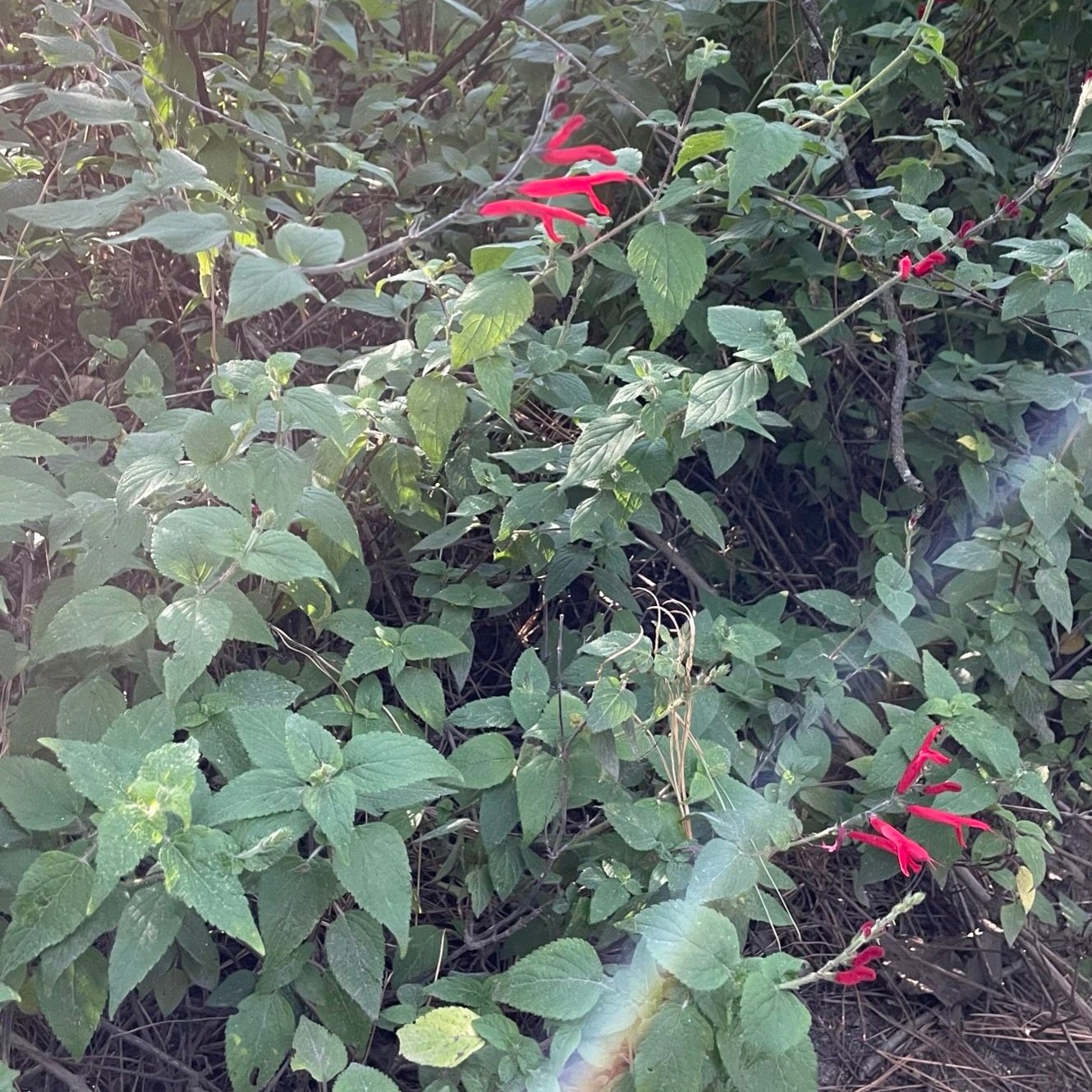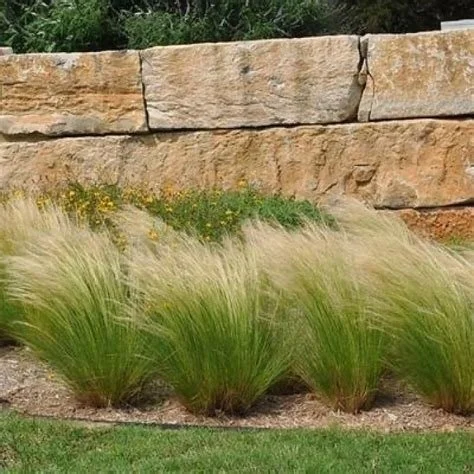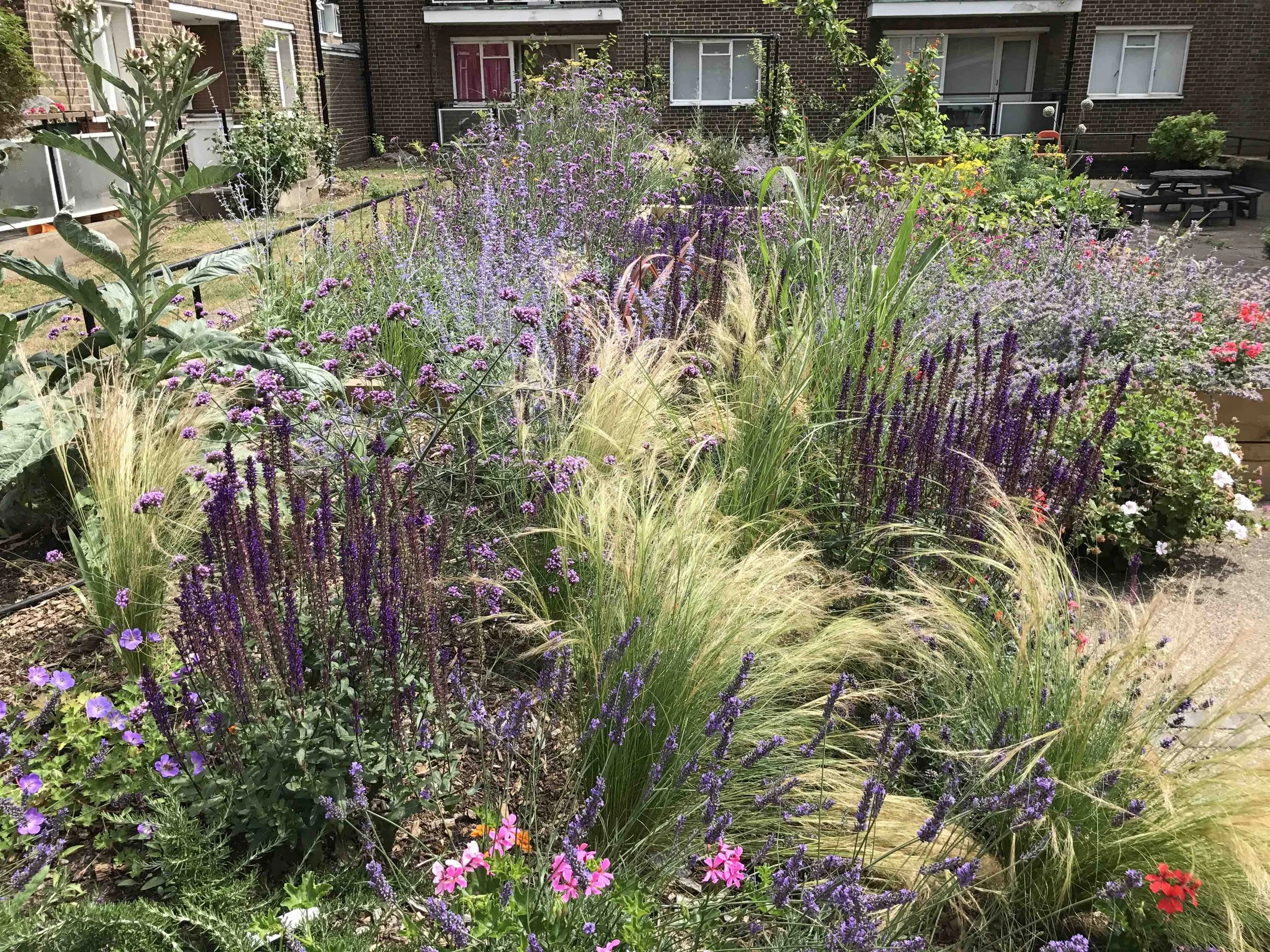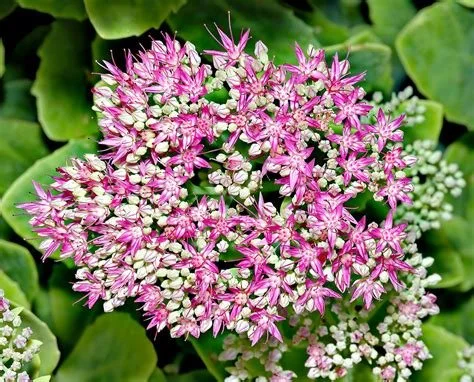Mexican Plants in London (part 2)
In the previous chapter, we looked at the hugely varied climate of Mexico, and focused on one of the plants I encountered on my expedition there, lupins. This chapter focuses on two more plants that are native to Mexico, and which combine very effectively in contemporary British garden design: the massive family of the Sages (in particular the woody, aromatic sages exemplified by the small leaved sage Salvia microphylla) and Mexican feathergrass, Nasella tenuissima.
The vibrant red flowers of the Salvia microphylla species have been bred into almost every colour of the rainbow. This cultivar’s name ‘Cerro Potosi’, hints at the species’ origin in the mountains of Mexico.
These are some of the salvias I found hiking La Malinche, with their characteristic scarlett flowers atop scruffy, aromatic foliage.
This image shows how the dynamic, flowing forms of the Nasella contrast effectively with strong, static and monumental landscaping elements such as stone, timber sleepers or sculptures.
The Sages (Salvia)
The group of plants known as sages or Salvia play a huge role in British horticulture and garden design. Everyone is familiar with the household herb ‘sage’, but what about its botanical name of Salvia officinalis? ‘Salvia’ is linked to being healthy and, with it, salvation. You'll often find plants and some animals with the epithet ‘officinalis’, because they have long been recognised to have medical or culinary qualities. They were kept in the storeroom, or office, of the monastery for medical purposes. Botanical names are often clues to a plant’s qualities or preferences, and you can find the origin of other botanical names here.
Sages hybridise and cross pollinate extremely well, so garden designers are spoilt for choice when exploring salvias, as you can see in this article. Almost all varieties are beloved by pollinators, for whom they provide long flowering seasons and rich nectar reserves. You can find out more about salvias’ appeal for pollinators in this charming article.
We’ve used Salvias in countless Urban Growth gardens, and often combine it with our third plant: Stipa or Nasella tenuissima.
Salvia nemerosa (purple spikes) combined with Nasella, Verbena bonariensis and Geraniums among others, at Caldwell Gardens.
The rich purple in the foreground is Salvia ‘Love and Wishes’, set against the background of Nasella at our garden in Battersea Power Station.
Nasella tenuissima
Popularly known as Mexican feather grass, this is perhaps our most popular landscaping plant at Urban Growth. But in contrast to lupins and sages, it doesn’t have much relevance outside of ornamental gardening. It’s not used for food, and it doesn’t provide nectar for pollinators, being a wind-pollinated grass. But you can see from the photos below that in its native habitat, it plays a vital role as the dominant plant in the landscape. It stabilises the soil on slopes and reduces erosion by wind on the plains. It’s worth pointing out that its robustness and adaptability have led it to be classified as an invasive species elsewhere in the world with similar climates eg. South Africa, Australia and California, where it crowds out native species and creates a monoculture, increasing fire risks.
Established woodland on the slopes of Sierra Negra, with mature pines (possibly Pinus montezumae), and Nasella growing in the more open zones, characteristically glowing in the sun.
A more open section of the same slope, showing a transitional zone with other, unidentified herbaceous and woody perennials and some emergent young pines, with Pico de Orizaba towering above it all (summit at 5,600m).
A note about its name. I learned this plant as Stipa tenuissima but, as often happens, at some point (possibly 2011), the classifications changed. These changes are determined by the latest developments in genetics and botanical classification, and governed by such august groups as Hortax and, more locally, the Jepson Manual. The trickiest example of this in recent memory was the renaming of some Sedums (ice plants or stonecrops) to Hylotelephium…Well, luckily the only time we really have to worry about this is at the garden centre, and thank goodness it’s not us who has to throw away and reprint all the labels! But if you’re ever in doubt about a plant’s name or characteristics, there is one website above all others I can recommend: the Missouri Botanical Garden Plant Finder. The level of detail, its authoritativeness, and the richness of their resources is, in my experience, unparalleled by any other website.
In the next chapter, we will return to each of these three focus plants, and dive into how you can use them in your gardens at home.
The sparkling flowers of Hylotelephium spectabile (formerly, and much more simply Sedum spectabile). These are an excellent source of nectar for pollinators and, flowering in autumn, provide when many other alternatives have faded.








